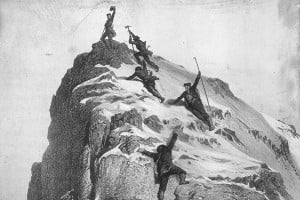
This summer, Belgian climber Sébastien Berthe ticked more hard alpine classics in the space of a few weeks - some in a matter of days - than many people would achieve in a lifetime. Although the 27-year-old is a familiar face on the IFSC competition circuit, he's largely flown under the radar in terms of hitting headlines in both competitions and on rock. Last year, however, a rare free ascent of The Nose on El Capitan in an 8-day ground-up push shot his name to prominence, and this year he's made even more of a name for himself with fast repeats in quick succession on some of Europe's most intimidating faces as part of his summer zero-carbon bike and climb trip alongside Nico Favresse (and their dogs).
Seb's summer 2020 ticklist
- Carnet d'adresse 8b/+, 250m (Rocher du Midi)
- Le Mur des Cyclopes 8b/+ (rope solo) (St Léger)
- Mister Hyde 8c+ (Céüse)
- La Voie Petit 8b, 450m in a day (Grand Capucin)
- Bellavista 8b+, 450m in a day (Tre Cime di Lavaredo)
- Claudio Barbier's famous 5 North Face route link-up on the Tre Cime in a day (21h11): 1,750m of climbing and ~52 pitches (with partner)
- Speed Intégral 9a (Voralpsee)
- The Alpine Trilogy (the pair aimed for to complete it in a season, they did it within two weeks, cycling between the routes):
- -Silbergeier 8b+, 250m in a day (Rätikon),
- -End of Silence 8b+, 350m in a day (Berchtesgaden Alps)
- -Des Kaisers Neue Kleider 8b+, 240m in a day (Wilder Kaiser)
- Headless Children 8b, 250m flash (Rätikon)
- Odysée 8a+, 1400m in a day (Eiger North Face)
Seb started climbing at the age of 7 and has won multiple national titles in Belgian competitions and has participated in over 50 IFSC international events. On rock, he's redpointed 9a, freed The Nose and more recently ticked pretty much every hard multi-pitch in Europe. Alongside his passion and talent for climbing, Seb has also competed at national level in trail running, athletics and triathlon events, becoming Belgian champion in a half-marathon event in his early twenties.
Now qualified in Physical Education and working as a climbing coach, Seb has applied his knowledge of training to coaching other climbers and - it would seem - to honing his own fitness and skills. Given the latest additions to his ticklist and the conditions he achieved them under (a global pandemic, cycling between the Trilogy climbs) it'll be interesting to see what he could achieve in more 'normal' circumstances, especially since he doesn't appear to take himself too seriously...
Veteran Belgian climber and adventurer Nico Favresse, who partnered Seb on many of his climbs this summer, told UKC:
"Climbing with Seb was extremely motivating for me. Not only because of his outstanding climbing skills which I had to fight to keep up with, but also and especially because of his positive motivation and spirit, and of course his unique clothing style ;-) It all made up for a lot of fun. He is the best partner I could have ever wished for on this trilogy conquest."
We sent Seb some questions to find out more about his incredible summer and his climbing journey so far...
You competed as a junior in IFSC events and have done some senior events. What did you learn from competing, and did you enjoy it?
I have always enjoyed competing and competitions motivated me for a huge part of the training that made me become the climber I am now. Competing brought me to my limits, helped me to push my daily training further, helped me to face failure and learn from it. Through competition I figured out that I had to be creative and to keep thinking about changes in my training to improve. I also had the chance to meet a tonne of climbers from all around the world!
Over the last few years, I wanted to invest myself in performing at the senior world cups. The way climbing competitions have evolved does not really fit my style; it was pretty tough for me and I got my ass kicked at most of the comps, but it is also the period of my life where I improved the most, not only in competition but in all styles of climbing.
Your dad is a climber and he took you on multipitch routes from the age of 10. In what ways has he influenced your climbing?
My father did all kinds of climbing: competition, bouldering, multipitch and even alpine. Now, he is managing his own climbing gym and still climbs a lot. As an all-round climber, he always told me about the history of climbing and brought me to so many different climbing areas. As a result, I became passionate - not only about climbing moves, but also about all the stories and the adventures linked to the climbing world. I feel that my passion is still my best weapon for continuing to improve my climbing.
I must say, being on an exposed multipitch route such as The Fish on the Marmolada (I was there with him in 2009) helped me to feel at home on a multipitch anchor! I feel that I can climb pretty much the same way, whether I'm starting from the ground at the crag or on the tenth pitch of an alpine route. It also probably helped me to learn how to face delicate situations, looooong days or cold temperatures.
Your free ascent of The Nose in 2019 came as a surprise to many people, as you were relatively unknown at the time. When did you decide to try for a free ascent, and how did it feel to do it (very quickly as well!)?
Ahaha, Epic TV called me: "The Guy Who NOBODY Expected To Free Climb The Nose"! It feels cool to be the guy whom nobody expected to do it: no pressure, just good surprises!
Freeing The Nose has been a dream since I was a child, but the first time I seriously thought about it was just over three years ago, when my Swiss friend Nicolas Preitner and I did the route in a day. The goal was not to free climb at all: we pulled on everything we could on our way up. After exactly ten hours of climbing, we reached the top of El Capitan. It was my first time on it and while I was aid climbing the crux pitches, I knew I'd give it a proper free attempt one day.⠀⠀⠀⠀⠀⠀⠀⠀⠀
⠀⠀⠀⠀⠀⠀⠀⠀⠀
A year later, in 2017, I went back on the route with my father on a regular 3-day ascent. My goal was to free-climb as many pitches as possible. Unfortunately, I couldn't try the roof as it was wet and I tried the Changing Corners only once as we had to keep going towards the summit to catch our flight back home.⠀⠀⠀⠀⠀⠀⠀⠀⠀
⠀⠀⠀⠀⠀⠀⠀⠀⠀
Freeing The Nose was the main goal of last year's 3-week trip. I wanted to do it ground-up, without rappelling from the top and therefore, without trying the crux pitches beforehand, which had never been done before. I knew I could have a chance because I had done really hard pitches pretty fast on El Cap before (I did the second ascent of the Free Heart Route, free-climbed Freerider in a day and almost climbed Zodiac the year before). It felt so good to reach the top of The Nose and I figured out how big this was while climbing it. The Changing Corners is such a big challenge and I had underestimated it... Moreover, I'm really proud about the way I climbed it, ground-up.
Anyway, I hope I will still be the unexpected guy regarding my climbs in the future: it would mean I'd have to do some pretty amazing climbs I guess!
You've had the best summer of anyone, it seems, looking at the long list of routes you've ticked! What are your personal route highlights?
It is hard to say briefly what the highlights were, I could probably write a book about my highlights! All of the multipitch routes I climbed this summer are amazing and nothing was left unfinished! I had to fight hard for each of them and had great time! I would say the best moments were the ones when I was flirting with failure, but somehow could still do it. In Des Kaisers Neue Kleider, for example, it was magical when Nico and I kept climbing and fighting all night long, despite the number of falls and tries we had.
I will also always remember the support I had from each partner I had this summer. It actually still feels a bit unreal to have climbed so many hard lines which I'd dreamed of all my life. I climbed these routes way faster than I had expected and it would never have been possible without the the support I got from the people I was climbing with.
Tell us a bit about the zero carbon bike trip you did. What was the purpose of the trip, and how did you feel after cycling between so many hard routes and combining this with climbing them? You did even more routes than the Trilogy you had initially planned!
More than a simple sporting challenge, the purpose of this 'bike and climb' trip was a way to combine hard climbs and sustainable mobility. We wanted to show to people and climbers that it is possible to keep climbing hard and a lot and take a responsible approach at the same time. We actually figured out that this way of travelling was not that hard and you only had to go for it. Furthermore, it was really cool to see that adventure does not start at the first pitch or climbing move, but way before. Biking is such a wonderful way to enjoy the landscapes, get the measure of things and distances. It is also the perfect way to meet people and to soak up culture. I was pleased to notice that the travel was part of the adventure, which is so cool compared to trips where you take three planes and two buses before the adventure really starts.
Indeed, as we were feeling pretty good (did the biking get us in good shape? I don't know!), it was cool to add Odyssée on the Eiger in a day and Headless Children in the Rätikon to the initial plan of climbing the Trilogy.
Since I came back from this trip, I did many more of my daily travels by bike and it actually feels easy and comfortable.
How did the dogs (and flamingo) enjoy the trip. It seemed like doggy daycare (one is just a puppy!) was the crux sometimes?
The dogs were for sure the crux of the whole expedition! We always had to think about them instead of focusing or climbing or biking like we wanted. On the other hand, it was such a pleasure to have them with us! They were living their best lives, no doubt! It really brought the most fun we could imagine!
What was it like climbing with Nico? Had you climbed together much before?
Except for a few times at the crag, we had never been real climbing partners before. I was really psyched to climb with Nico: he is one of my childhood heroes and I still have a poster of him in my bedroom at my parents' place! I was not disappointed! Climbing with him really pushed me forwards. I had actually never experienced such support from a climbing partner before. What a healthy competition! When one of us sent a pitch, the other was following. I wanted him to send as much as I wanted it for myself and I felt it was the same for him.
It was also really inspiring and impressive to see Nico in action; his technique and his mental game are the best I've come ever across! He is also a really good beta researcher and it was cool to see that there was much easier beta than the methods I had chosen in my attempts.
I will only criticise him for two things: he always put the microtraction on backwards, and the same for the jacket we shared, haha!
What do you think has made the biggest difference to your rock climbing in the last year or so, to enable you to tick so many hard lines?
I have spent the last few years mostly training for comps, studying (Physical Education at the Catholic University of Louvain) and working (as a climbing coach or routesetter for climbing gyms and the Belgian federation). Outside of an annual one-month trip to Yosemite (2016 and 2017), I did not have much time to climb outside. Although I was improving a lot physically and mentally, I did not have the time to transfer it to outdoor routes.
More recently, I decided to focus on rock and dedicate myself to climbing. I quit my job and tried to climb on the terrain which I knew was my comfort zone: technical, long or exposed multipitch routes.
In the end, I am really happy to know that it worked out even better than I had expected. I guess the main difference this year was having the time I could put in to practise all the training I had learned about in the past few years.
Do pink tights make you climb harder? Is that your secret?
Yes it is THE secret! But could you please keep it to yourself? ;)
I've always liked the adage: 'Style first' or 'style is more important than the performance.' The good thing with these words and my pink tights is that if I can't perform, whatever the reason is (my obvious weaknesses or a foot slip), I at least have style. What is better than failing with style?
More seriously (or not), I noticed that flirting with the absurd or ridiculous helps me to deal with the stress of exposed climbing at my limit. Taking things such as a pink flamingo helps to keep your feet on the ground even if you are 300m off the ground!
You've spoken out on social media about the funivia in the Dolomites, lifts in the Mont Blanc Massif and other environmental issues. Is environmentalism something that's important to you?
Environmental protection and the ecological fight are really important to me. Global warming and its consequences is more than just a fact, it is an emergency we have to deal with right now! I love travelling, I love climbing, I love nature and discovering new places. I know that if I want to keep climbing outdoors, if I want the playgrounds we have to remain the same, we need to change the way we live. Scientists make it clear: if we don't fight against global warming by reducing our greenhouse gas emissions as much as we can, things will change and not for the good. I am not talking about climbing conditions and friction! Our entire lives will change and leisure - including climbing - will become secondary.
For a few years now, I have been thinking about how I could limit my own impact on the environment and have tried to do so through small daily acts. In 2013, I became vegetarian, and since then I've tried to limit my waste, reduce my travels by car or plane (even if I still used them a lot for climbing), or use sustainable or second-hand products, gear and clothes...
Right now, I really want to inform people through climbing. I want to show climbers, through acts and trips like my bike-trip, that it is possible to live and climb in a sustainable and responsible way.
Belgium isn't really known for its rock climbing, but it's nonetheless produced some very accomplished rock climbers over the years : Chloé Graftiaux, Anak Verhoeven, Nico Favresse, Sean Villanueva O'Driscoll and you, amongst others. What makes Belgian climbers so good, despite the lack of rock? Are they more willing to travel, do you have a good indoor training set-up, etc.?
Well, actually we do have some good rocks. We have a wonderful massif called Freyr. It's not very famous to foreigners but it's the best school to learn how to rock climb! It's a perfect, compact, grey technical limestone; it's very old-school, hard for fingers, demanding for the feet and with tough grades. When you have climbed there, almost every crag feels comfortable and soft. I have spent many hours there and Nico, Sean, Siebe Vanhee, or more ancient heroes such as Claudio Barbier and Arnould Kint have done the same. It was and still is our playground, the place where we set up for bigger goals. Freyr really helps Belgians to face the most technical, hard and long climbs around the world.
Belgium also has a pretty amazing climbing culture and was the first country in Europe (maybe in the world) to have a proper climbing gym (Terre Neuve, born in 1987 in the center of Brussels). I think strong climbers such as Muriel Sarkany were really healthy role models and encouraged young climbers like Chloé, Anak and others to believe they could be among the best climbers in world, despite the fact that they are not living in the most mountainous country.
Chloé Graftiaux's death in 2010 must have had a profound impact on Belgian youth climbers at the time. What is her lasting legacy in Belgium, and for you personally?
I remember very well the day I learned about Chloé's death. It had a huge impact on me as she was really representing what I eventually wanted to become as a climber: an all-rounder. It's crazy to remember how motivated she was for climbing, whatever the discipline. I think her motivation and the way she was approaching climbing have already inspired a few generations of young Belgian climbers and will continue to do so for quite a while.
What are your next goals? Are you finished with competing? Are you keen to try more routes in alpine environments after climbing on the Eiger and the Grand Capucin?
I have many goals, maybe too many... It's kind of a desperate quest: as soon as I reach one goal, two more are coming into my mind. Haha, I think I can still keep myself busy for quite a long time!
I will for sure do more comps, at least in Belgium. International comps are probably over for me but I'm not sure at all - motivation draws me more to the outdoor world at the moment, but who knows? My next ideas, as with our bike trip, are to combine sustainable mobility with hard climbs, or at least some 'close to home' and local goals. This fall and winter, I will focus on sport climbing and try to push my limits on single pitch routes. In spring, I'll probably have some multipitch projects, but let's keep them secret for now!
I really enjoyed climbing on alpine routes on the Grand Cap and the Eiger. I feel good up there and I will probably do many more, but I want to take my time and focus on my weaknesses, which lie in making shorter and more intense efforts.
- SKILLS: Top Tips for Learning to Sport Climb Outdoors 22 Apr
- INTERVIEW: Albert Ok - The Speed Climbing Coach with a Global Athlete Team 17 Apr
- SKILLS: Top 10 Tips for Making the Move from Indoor to Outdoor Bouldering 24 Jan
- ARTICLE: International Mountain Day 2023 - Mountains & Climate Science at COP28 11 Dec, 2023
- ARTICLE: Did Downclimbing Apes help Evolve our Ultra-Mobile Human Arms? 5 Dec, 2023
- ARTICLE: Dàna - Scotland's Wild Places: Scottish Climbing on the BBC 10 Nov, 2023
- INTERVIEW: Loki's Mischief: Leo Houlding on his Return to Mount Asgard 23 Oct, 2023
- INTERVIEW: BMC CEO Paul Davies on GB Climbing 24 Aug, 2023
- ARTICLE: Paris 2024 Olympic Games: Sport Climbing Qualification and Scoring Explainer 26 Jul, 2023
- INTERVIEW: Malcolm Bass on Life after Stroke 8 Jun, 2023



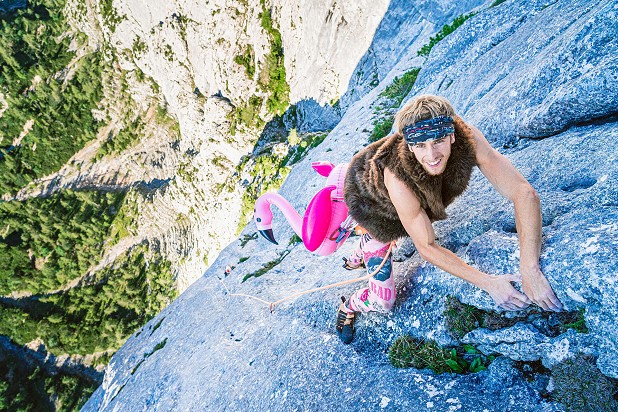

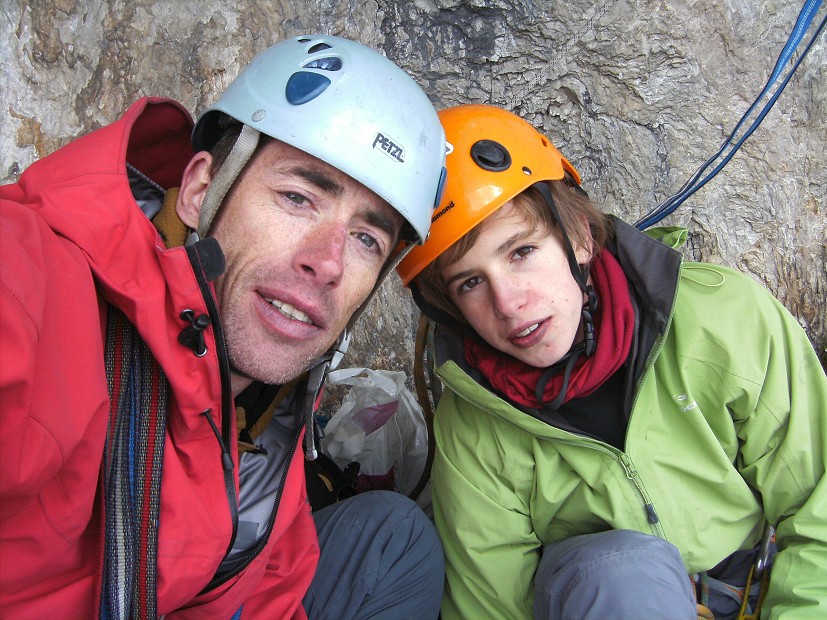

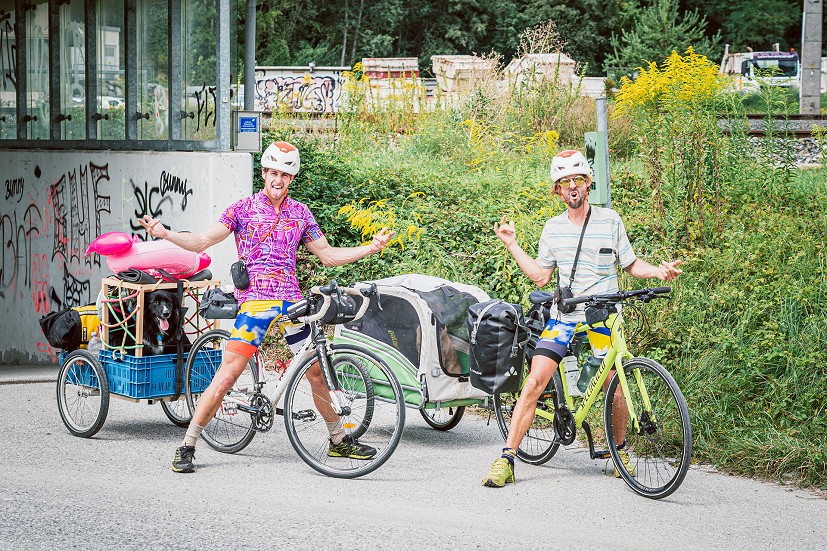
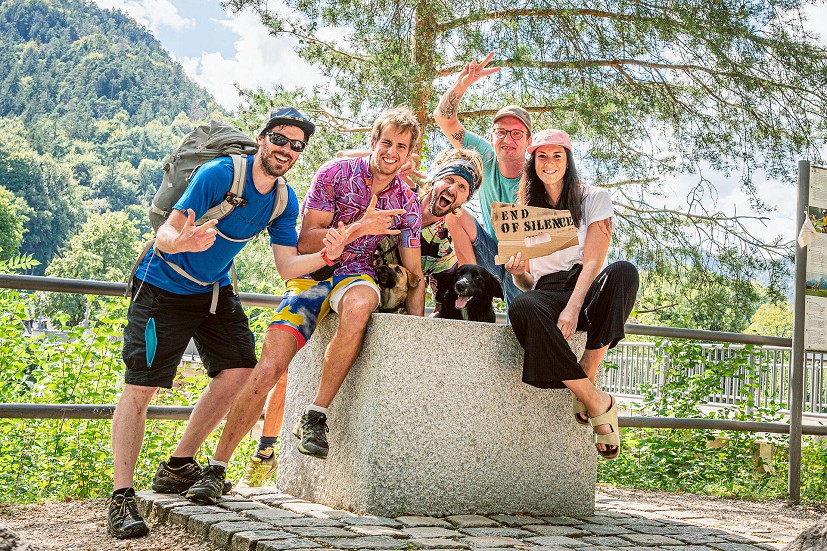
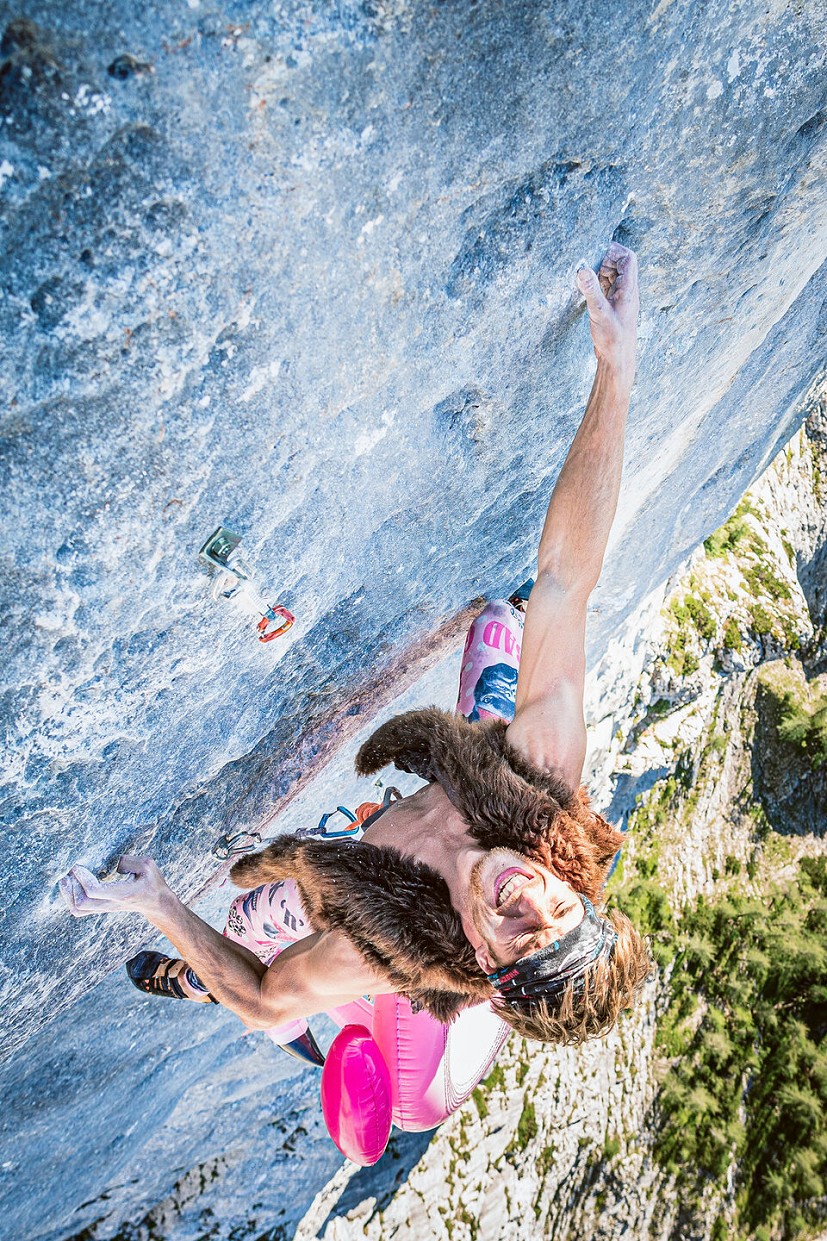

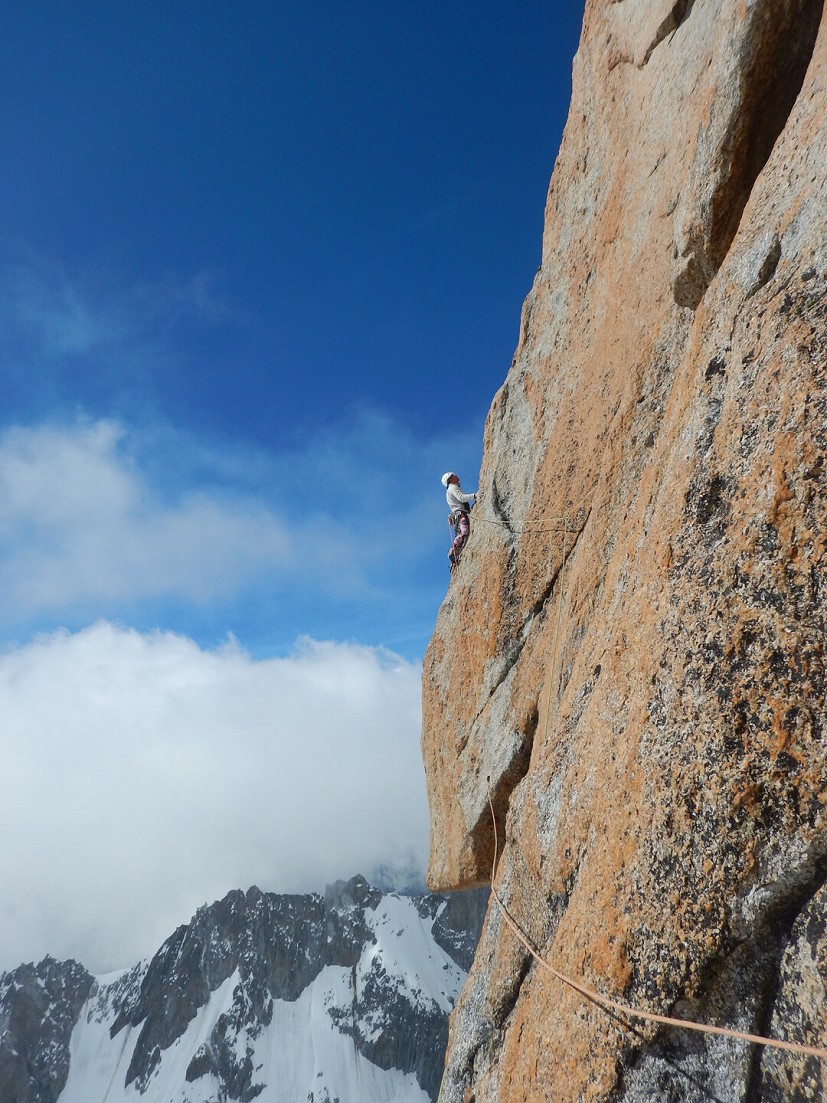
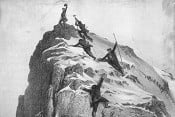
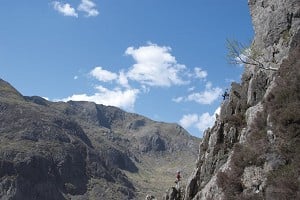

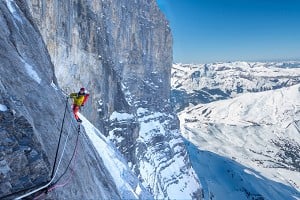










Comments